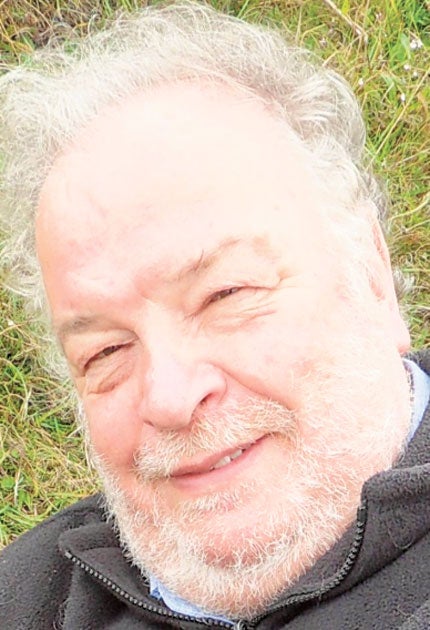John Reay: Artist whose work embraced both large-scale pieces for public spaces and experimental pictures on paper

John Reay was one of East Anglia's most prolific artists of recent years. The seashore and human figure were a central theme in his pictures. He worked initially on a very small scale on location on the Suffolk and Norfolk coast, but over the years his work went through a series of stylistic changes. Eventually it alternated between those early, modest, on-the-spot landscapes and larger compositions – of figure groups on the seashore and single figures –completed in his studio overlooking the Lowestoft docks.
As well as big works suitable for public places, Reay also createdexperimental works on paper. He had wide musical tastes, played thesaxophone among other instruments and claimed "a love of drawingand painting musicians practising or performing".
John Reay was born in London in 1947, with an older sister. After he married Kathie Habgood in 1967, when he was 19 and she was 18, he began to pursue his love of art.
Reay attended Brighton Art School from 1969-70 and Norwich Art School from 1970-73. He moved to Lowestoft in 1974 to teach at The Denes High School. Further teaching at the Benjamin Britten High School, Lowestoft College and private tuition followed. The 6ft 3in Reay, a fun-loving, gregarious character, soon became a popular teacher at all levels.
Wide skies and a peculiar luminosity are two attractions that East Anglia offers the numerous artists who settle there. It was Reay's ability to capture what he called "the subtleties and nuances of light in its ever-changing variety, which renews and reveals the landscape as one looks and records" that gave his pictures their unique character.
He said that he was "stimulatedby the problems and contradictions of using these transient effects toreveal strong monumental forms". It was a tension Reay appreciated in the works of Edward Hopper, the American urban realist, "a constant influence on my art".
As he studied the coastal environment where he had settled and began to concentrate on the human figure, in the beach scenes for which hebecame especially known, Reayappreciated how this flat, spacious landscape was "throwing the figures into striking relief".
Reay was an artist with catholic tastes. He admired the pure sculptural form of certain artists workingin the inter-war years who were"associated with the 'return to order' neo-classicism", citing among these Picasso, Henry Moore, Maillol,Brancusi and Balthus. At the same time, he liked the transience in the landscapes of, among others, Boudin, Bonington, Wilson Steer, Monet, Turner and Constable.
Above all, he admired the synthesis of such extremes in the work of the French painter Seurat. When in London, he would visit the National Gallery to study Seurat's masterpiece "Une Baignade, Asnières", saying "for me, one of our greatest national treasures".
Doncaster Museum and Art Gallery, British Petroleum, Suffolk countylibraries and Worlingworth church in Suffolk are among public and corporate collections holding Reay's work, which was also bought by privatecollectors in several continents. As well as taking part in numerous mixed exhibitions in East Anglia, Reay participated in them at the Piccadilly, Thackeray, Crane Kalman andDuncan Campbell galleries in London, as well as abroad in New York and St Petersburg.
He had a solo exhibition at the Alwin Gallery in London in 1978. Many others included series at the Phoenix Gallery, Lavenham, from 1988; Chappel galleries, near Colchester, from 1989; Tudor House Gallery, Aldeburgh, from 1994; Buckenham Galleries, Southwold, from 1999; and Ferini Gallery, Pakefield, from 2006.
Reay died following a severe haemorrhagic stroke and a blood clot on the lung, and leaves a partner, Susan Key.
John David Reay, artist and teacher: born London 2 October 1947; married 1967 Kathie Habgood (marriage dissolved 1993; one son, one son deceased); died Gorleston-on Sea, Norfolk 28 January 2011.
Subscribe to Independent Premium to bookmark this article
Want to bookmark your favourite articles and stories to read or reference later? Start your Independent Premium subscription today.

Join our commenting forum
Join thought-provoking conversations, follow other Independent readers and see their replies